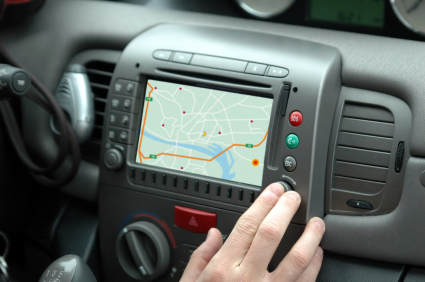Comprehensive Insights Into GPS Technology and Its Impact on Modern Navigation
This comprehensive article explores the history, technology, and diverse applications of GPS, highlighting its evolution from military roots to essential civilian use. It covers satellite systems, orbital satellites, relativistic effects, and the future of global navigation, providing a detailed understanding of how GPS impacts modern life across multiple industries.

Comprehensive Insights Into GPS Technology and Its Impact on Modern Navigation
Explore the Fascinating World of GPS Technology
Global Positioning System (GPS) technology has become an indispensable part of our daily lives, revolutionizing how we navigate the world. Originally developed for military purposes, GPS has since evolved into a ubiquitous tool used in countless civilian applications, from smartphones to aerospace navigation. Understanding the intricacies of GPS technology reveals not only its historical development but also its significance in modern society. This comprehensive guide delves into the origins, current systems, satellite infrastructure, technical nuances, and diverse applications of GPS technology, expanding on the core concepts for a thorough understanding.
The Evolution of GPS and Global Navigation Satellite Systems The concept of satellite-based navigation dates back to the Cold War era when military agencies sought precise ways to coordinate and track assets globally. The U.S. Department of Defense initiated the development of GPS in the 1970s, culminating in a fully operational system by the 1990s. While GPS remains the most recognized system worldwide, it exists alongside other global navigation satellite systems (GNSS), each serving specific regions and purposes.
Aside from GPS, notable satellite navigation systems include Russia’s GLONASS, Europe's Galileo, and China’s BeiDou. While GPS and GLONASS offer comprehensive global coverage, Galileo and BeiDou are rapidly expanding, aiming to strengthen their regional and global services. The competition among these systems fosters innovation, enhances accuracy, and offers redundancy for critical applications. The growth of these systems signifies the importance of satellite navigation technology in global infrastructure.
Orbital Satellite Network: The Backbone of GPS Accuracy GPS relies on a constellation of approximately 32 satellites orbiting the Earth. These satellites are strategically positioned to provide robust coverage across the globe. While a minimum of 24 satellites was once considered enough for continuous positioning, the current number allows for improved flexibility, resilience, and maintenance. Each satellite continually transmits radio signals containing key data, including precise time stamps and orbital parameters, which are crucial for accurate positioning.
Satellite Visibility: The Magic of Line-of-Sight Despite having over thirty satellites in orbit, a GPS device only needs to establish connectivity with at least four satellites simultaneously to accurately determine its location. This is due to the physics of trilateration, where signals from multiple satellites are used to calculate intersections that pinpoint a device's exact position. The process relies on the constant, near-instantaneous transmission of signals at the speed of light, allowing for real-time location updates.
Timekeeping and Relativity: Ensuring Precision Accurate positioning depends heavily on precise timing. GPS satellites are equipped with atomic clocks, which are incredibly accurate but must account for relativistic effects due to Einstein’s theories. Satellites operate in a weaker gravitational field than Earth's surface, causing their onboard clocks to tick faster by about 38 microseconds daily. Failure to adjust for these effects would result in errors accumulating at roughly 10 kilometers per day. Therefore, the system integrates relativistic corrections, ensuring that all timing signals maintain astonishing accuracy, which is fundamental to GPS's reliability.
From Military Origins to Civilian Necessity When GPS was first created, it was solely a military tool designed for strategic operations. However, in 2000, the U.S. government made the system openly available to the public, sparking a technological revolution. Today, GPS underpins modern life, from personal navigation to critical infrastructure. Its availability has facilitated innovation across industries, enabled emerging markets, and improved safety standards worldwide.
Expanding Roles and Diverse Applications of GPS The versatility of GPS technology is evident in its myriad applications beyond simple navigation:
Timely synchronization of financial transactions and power grids using onboard atomic clocks
Tracking missing persons and enhancing safety in specialized footwear designed for Alzheimer’s patients
Navigation systems employed in aviation, maritime, and road transport to ensure safe, efficient travel
Support for autonomous vehicles, drones, and advanced robotics in real-time positioning and mapping
Geofencing and location-based marketing for commercial purposes
As GPS continues to evolve with the integration of new satellite systems and technological advancements, its role in shaping the modern world remains pivotal. From everyday navigation to space exploration, GPS technology exemplifies human innovation and the pursuit of precision. Understanding these intricate details highlights the complexity and significance of this remarkable system that guides us through our daily lives and beyond.





